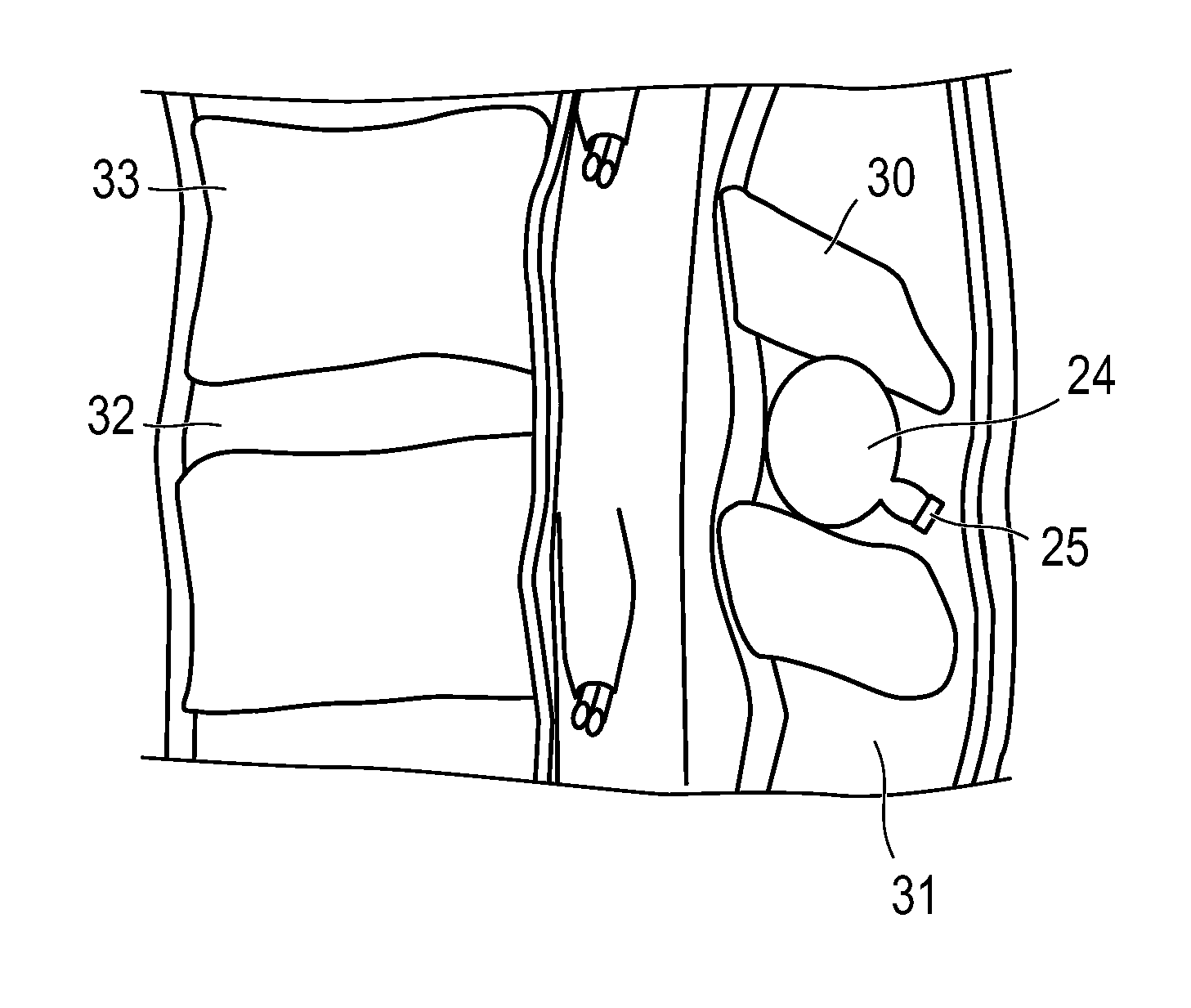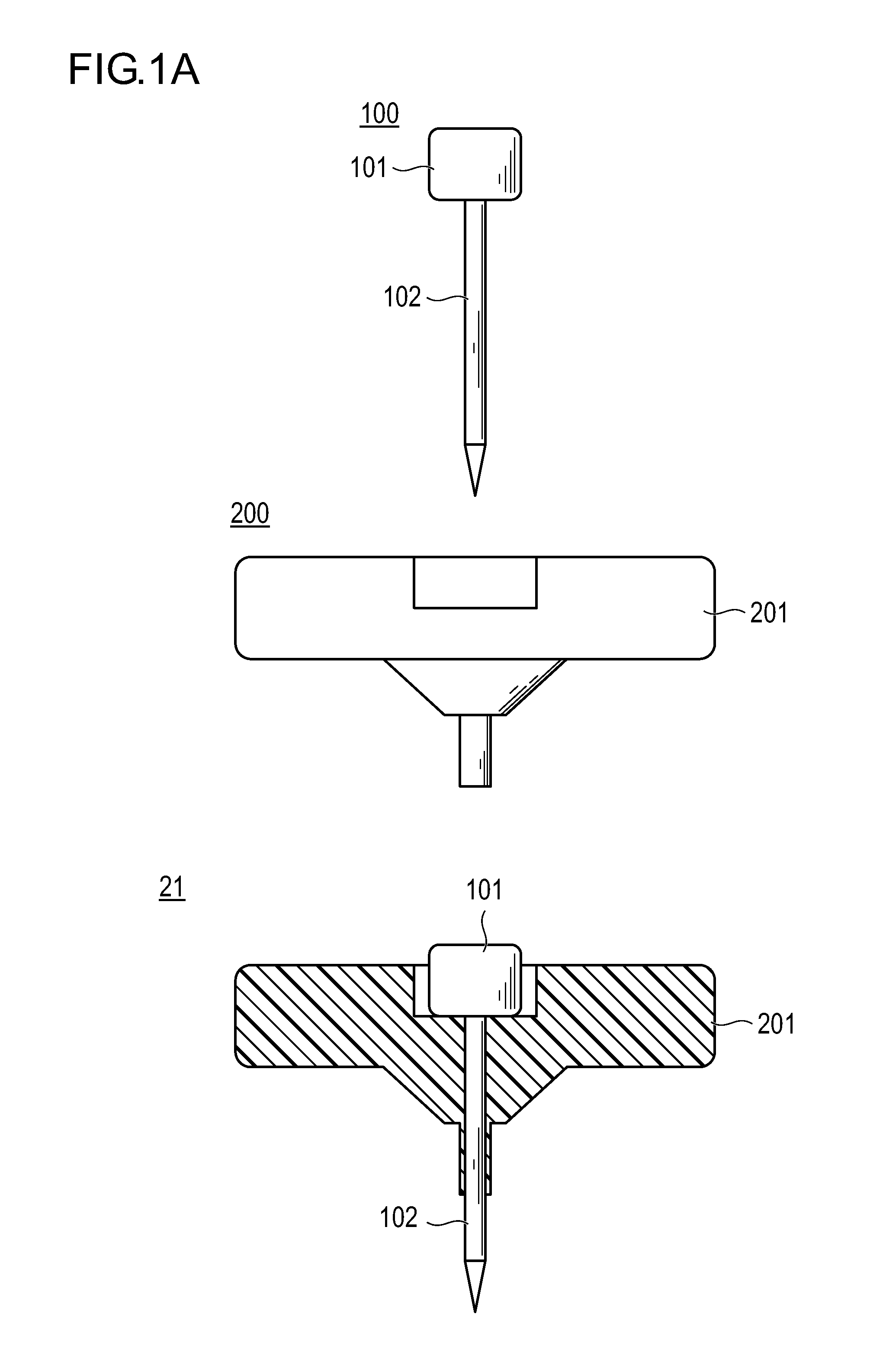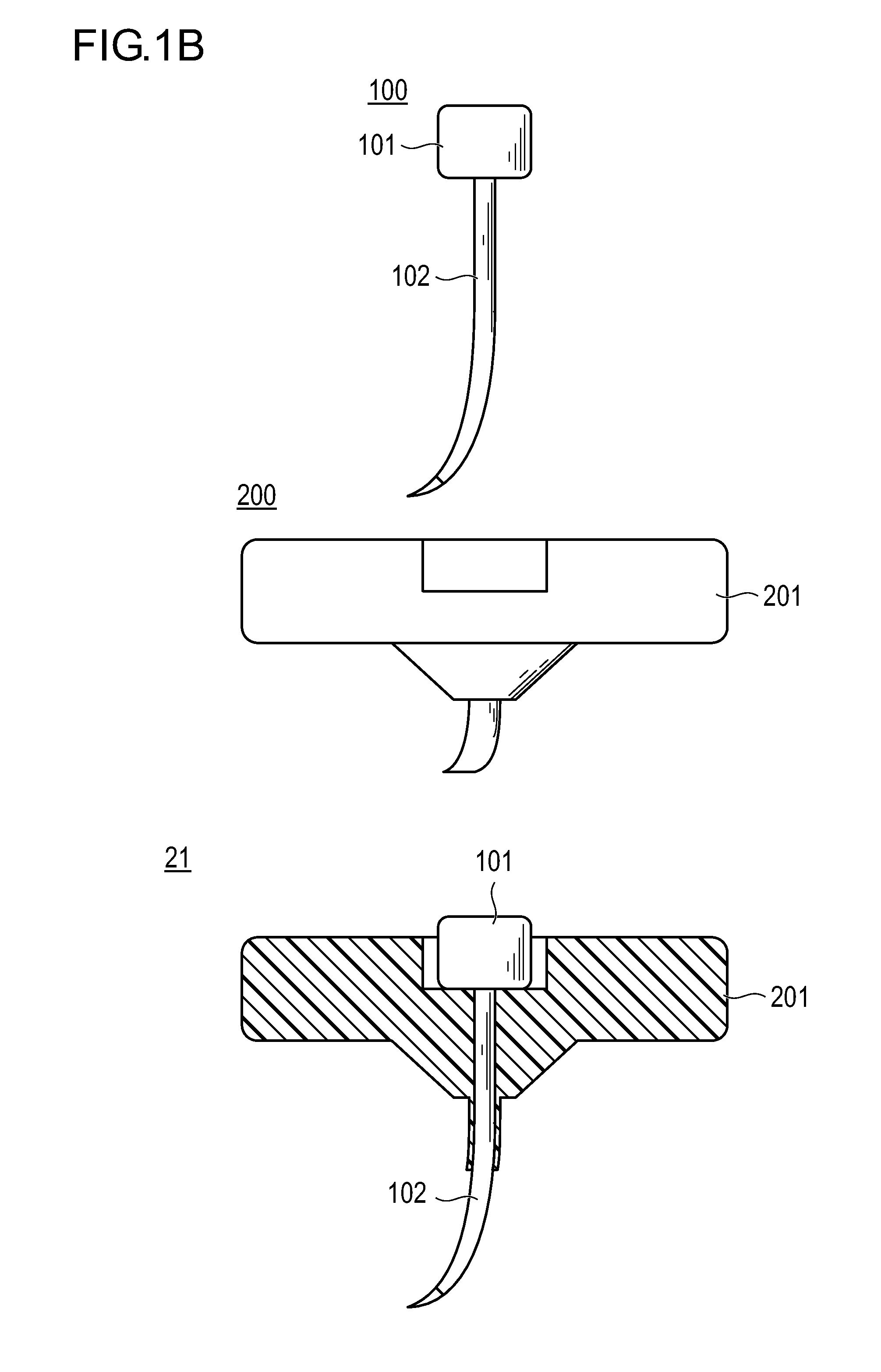Method for dilating between spinous processes
a spinous process and process technology, applied in the field of dilating between spinous processes, can solve the problems of intermittent claudication, difficult fixation, lumbar spondylolysis, etc., and achieve the effect of effectively reducing the symptoms of these diseases and effectively treating them
- Summary
- Abstract
- Description
- Claims
- Application Information
AI Technical Summary
Benefits of technology
Problems solved by technology
Method used
Image
Examples
example 1
[0161]First, after the lesion is determined by roentgen or MRI technique, the part to be treated is anesthetized by local anesthesia or lumbar anesthesia. Then, the patient is put into prone position or lateral position, and the body is bent as much as possible, whereby the area between spinous processes 30 on the rear side of the vertebral body 33 and the intervertebral disk 32 is widened. Next, an approach site 11 for locating the expansion body is marked on the upper skin corresponding to the part between the spinous processes 30 which is the part to be treated (FIG. 5). Two puncture needles 21 having an inside diameter of 1 to 5 mm are made to penetrate the marked part by about 1 to 2 cm from the skin until they reach the paravertebral muscle. Then, the inner needles of the puncture needles 21 are pulled out, and the outer tubes of the puncture needles 21 are put locating (FIG. 6).
[0162]Rongeurs 22 as shears devices are inserted respectively into the lumens of the two puncture n...
example 2
[0167]After the same technique as in Example 1 is conducted and the contrast agent and the like are discharged from the expansion body 24 as much as possible, a hardening material being fluid at the time of injection and hardening after the injection is injected as a filling material into the filamentous body 23 provided with the expansion body, to expand the expansion body (FIG. 13).
[0168]Next, the puncture needle 21 is evulsed from the skin, and the shaft 26 of the filamentous body 23 provided with the expansion body is exposed. The filamentous body 23 provided with the expansion body is pulled proximally to such an extent that the expansion body 24 is not pulled off, whereby the injection port 25 of the expansion body 24 is elongated by 0.2 to 1 cm. Then, the injection port 25 is tied with a twisted suture or a band or the like on the outside of the skin, to be sealed (FIG. 14). Further, the filamentous body portion on the proximal side of the seal is resected by use of scissors....
example 3
[0169]In the same manner as in Example 1, after the lesion is determined by roentgen or MRI technique, the part to be treated is anesthetized by local anesthesia or lumbar anesthesia, the patient is put into prone position or lateral position, and the body is bent as much as possible, to widen the area between the spinous processes 31. Next, marking of one approach site for placement of the expansion body is made on the upper skin corresponding to the part between the spinous processes 30 which is to be treated. A puncture needle 21 having an inside diameter of 1 to 5 mm is made to puncture the marked part to a depth of about 1 to 2 cm from the skin, until it reaches the paravertebral muscle 31. Then, the inner needle of the puncture needle 21 is pulled out, and the outer needle of the puncture needle 21 is located (FIG. 17).
[0170]A rongeur 22 is inserted into the lumen of the puncture needle 21. While holding down the puncture needle 21, cutting 41 of the interspinal ligament 31 to...
PUM
 Login to View More
Login to View More Abstract
Description
Claims
Application Information
 Login to View More
Login to View More - R&D
- Intellectual Property
- Life Sciences
- Materials
- Tech Scout
- Unparalleled Data Quality
- Higher Quality Content
- 60% Fewer Hallucinations
Browse by: Latest US Patents, China's latest patents, Technical Efficacy Thesaurus, Application Domain, Technology Topic, Popular Technical Reports.
© 2025 PatSnap. All rights reserved.Legal|Privacy policy|Modern Slavery Act Transparency Statement|Sitemap|About US| Contact US: help@patsnap.com



